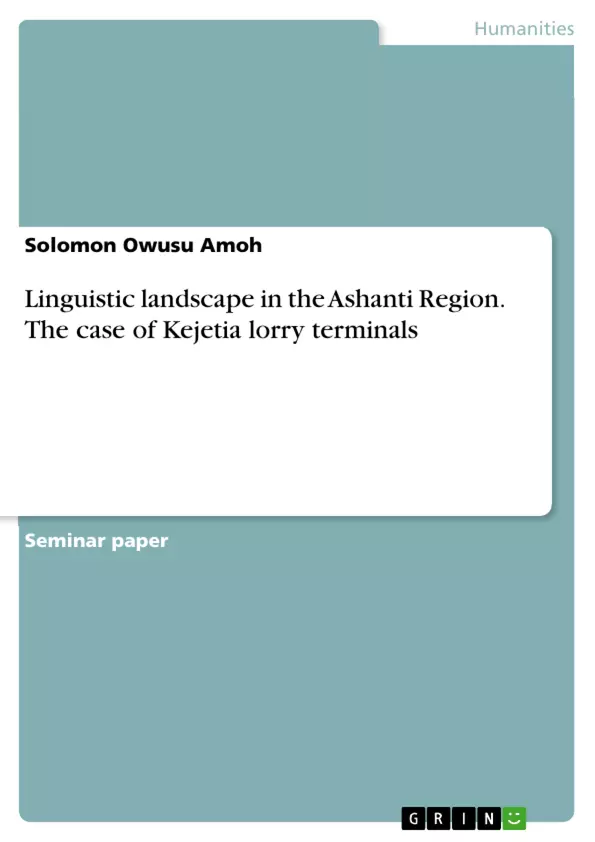In this study, the linguistic landscape of Kejetia, an indigenous lorry terminal and market place in Kumasi in the Ashanti region. Multifarious media of communication ongoing on the principal streets of Ghana are inscriptions on vehicles; where owners and drivers of, mostly commercial vehicles express their beliefs and experiences on their vehicles. The information is also free of charge; what is required is for one to be well-educated in the language in which the inscription is carried. The paper does not consider everything under the linguistic landscape of area. It only looks at the signage seen on vehicles in the various commercial lorry stations in lorry terminal of Kejetia. All of the text found on the vehicles were snapped and considered. The results showed that the Twi was very frequent used on the vehicles, followed by the English language, and few others appeared infrequently. It also appeared that, the use of paints for signaging has faded out as no vehicle was capture with that.
Table of Contents
- Introduction
- Literature review
- Objectives
Objectives and Key Themes
This study investigates the linguistic landscape of Kejetia, a lorry terminal and marketplace in Kumasi, Ashanti Region, Ghana, focusing specifically on inscriptions found on commercial vehicles. The study aims to identify the languages used, methods of inscription, and color preferences, as well as determine if private vehicles also display inscriptions.
- The linguistic landscape of Kejetia
- Types of inscriptions found on vehicles
- Prevalence of language use in vehicle inscriptions
- Color preferences in inscriptions
- Presence of inscriptions on private vehicles
Chapter Summaries
- Introduction: This chapter introduces the concept of vehicle inscriptions as a form of communication in Ghana, highlighting its historical evolution from the post-independence era to the present day. The chapter also introduces the specific context of Kejetia and its significance as a major commercial hub in Kumasi.
- Literature review: This chapter examines the scholarly literature on vehicle inscriptions and linguistic landscapes, highlighting the use of various terms to describe this phenomenon and tracing the origin of the concept back to Landry and Bourhis. The chapter also provides definitions of key terms such as "inscription" and "linguistic landscape" and discusses the importance of studying language attitudes in sociolinguistics.
- Objectives: This chapter outlines the research questions that the study seeks to answer, focusing on the languages used, methods of inscription, color preferences, and the presence of inscriptions on private vehicles.
Keywords
The primary keywords and focus topics of this study include: Kejetia, Kumasi, vehicle inscriptions, linguistic landscape, signage, language use, Twi, English, color preference, private vehicles, commercial vehicles.
- Quote paper
- Solomon Owusu Amoh (Author), 2018, Linguistic landscape in the Ashanti Region. The case of Kejetia lorry terminals, Munich, GRIN Verlag, https://www.hausarbeiten.de/document/508620


